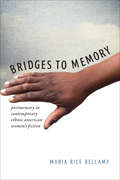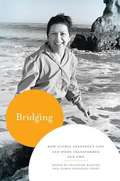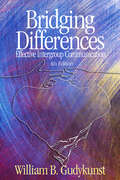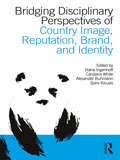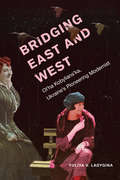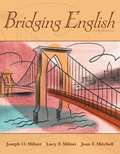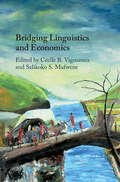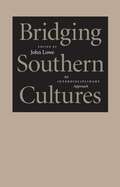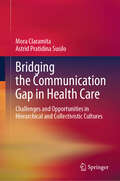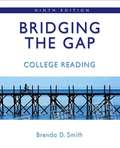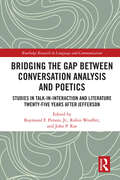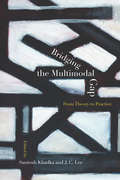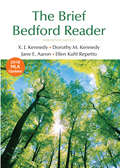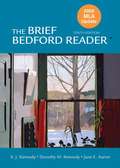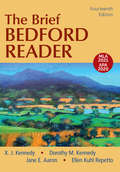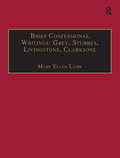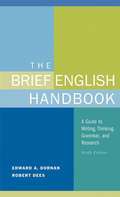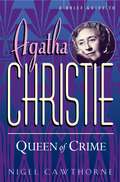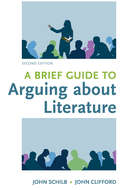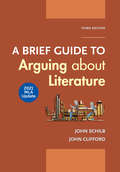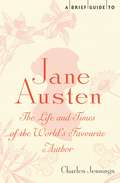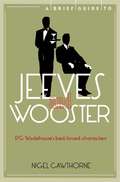- Table View
- List View
Bridges to Memory: Postmemory in Contemporary Ethnic American Women's Fiction
by Maria Rice BellamyTracing the development of a new genre in contemporary American literature that was engendered in the civil rights, feminist, and ethnic empowerment struggles of the 1960s and 1970s, Bridges to Memory shows how these movements authorized African American and ethnic American women writers to reimagine the traumatic histories that form their ancestral inheritance and define their contemporary identities. Drawing on the concept of postmemory--a paradigm developed to describe the relationship that children of Holocaust survivors have to their parents' traumatic experiences--Maria Bellamy examines narrative representations of this inherited form of trauma in the work of contemporary African American and ethnic American women writers. Focusing on Gayl Jones's Corregidora, Octavia Butler's Kindred, Phyllis Alesia Perry's Stigmata, Cristina García's Dreaming in Cuban, Nora Okja Keller's Comfort Woman, and Edwidge Danticat's The Dew Breaker, Bellamy shows how cultural context determines the ways in which traumatic history is remembered and transmitted to future generations. Taken together, these narratives of postmemory manifest the haunting presence of the past in the present and constitute an archive of textual witness and global relevance that builds cross-cultural understanding and ethical engagement with the suffering of others.
Bridging
by Analouise Keating Gloria González-LópezMore than twenty years after the ground-breaking anthology This Bridge Called My Back called upon feminists to envision new forms of communities and practices, Gloria E. Anzaldúa and AnaLouise Keating have painstakingly assembled a new collection of over eighty original writings that offers a bold new vision of women-of-color consciousness for the twenty-first century. Written by women and men--both "of color" and "white"--this bridge we call home will challenge readers to rethink existing categories and invent new individual and collective identities.
Bridging Differences: Effective Intergroup Communication
by William B. GudykunstThe Fourth Edition of Bridging Differences: Effective Intergroup Communication builds on the strengths of the previous editions and provides state-of-the-art knowledge about intergroup communication. This new edition brings a strong skills-oriented approach to improving communication effectiveness between people from different groups (e.g., cultures, ethnic groups, social classes). Bridging Differences is based on the assumption that the processes operating when we communicate with people from other groups are the same processes operating when we communicate with people from our own groups. Author William B. Gudykunst has written this book from the perspective of "communicating with strangers" and addresses how factors related to our group memberships (e.g., inaccurate and unfavorable stereotypes of members of other cultures and ethnic groups) can cause us to misinterpret the messages we receive from members of those groups. New to the Fourth Edition: Expanded discussions of several topics such as changing intergroup expectations; cultural differences in attribution processes; cultural and ethnic differences in conflict; cultural differences in indirect messages; cultural differences in uncertainty management; empathy; ethnic and cultural identities; face and its relationship to conflict management; intergroup communication effectiveness; intergroup conflict; intergroup biases; negotiating means; perceptual processes; and prejudice New material has been added on civic engagement; community in public life; diversity and community; the content of stereotypes; communication in romantic relationships; cultural differences in effective communication; and theoretical explanations for prejudice Pedagogical features include end-of-chapter study questions, self-assessment questionnaires, open-ended questions to stimulate readers to think about their implicit theories, and written skill exercises to increase students′ skill development Designed for students taking courses in Intercultural Communication or Intergroup Communication, Bridging Differences is also useful for many courses in Cultural Studies, Anthropology, Sociology, and Management.
Bridging Disciplinary Perspectives of Country Image Reputation, Brand, and Identity: Reputation, Brand, and Identity
by Diana Ingenhoff Candace White Alexander Buhmann Spiro KiousisCountry image and related constructs, such as country reputation, brand, and identity, have been subjects of debate in fields such as marketing, psychology, sociology, communication, and political science. This volume provides an overview of current scholarship, places related research interests across disciplines in a common context, and illustrates connections among the constructs. Discussing how different scholarly perspectives can be applied to answer a broad range of related research questions, this volume aims to contribute to the emergence of a more theoretical, open, and interdisciplinary study of country image, reputation, brand, and identity.
Bridging East and West: Ol’ha Kobylians’ka, Ukraine’s Pioneering Modernist
by Yuliya LadyginaBridging East and West explores the literary evolution of one of Ukraine’s foremost modernist writers, Ol’ha Kobylianska, who was a major contributor in the intellectual debates of her time. Investigating themes of feminism, populism, Nietzscheanism, nationalism, and fascism in her works, this study presents an alternative intellectual genealogy in turn-of-the-century European arts and letters whose implications reach far beyond the field of Ukrainian studies. Rather than repeating various narratives about modernism as a radical response to nineteenth-century bourgeois culture or an aesthetic of fragmentation, this study highlights the fissures and fusions inherent to turn-of-the-century thought. For feminist scholars, Bridging East and West makes accessible a thorough account of a central, yet overlooked, woman writer who served as a model and a contributor within a major cultural tradition. For those working in Victorian studies or comparative fascism and for those interested in Nietzsche and his influence on European intellectuals, Kobylians’ka emerges in this study as an unlikely, but no less active, trailblazer in the social and aesthetic theories that would define European debates about culture, science, and politics in the first half of the twentieth century. For those interested in questions of transnationalism and intersectionality, this study’s discussion of Kobylians’ka’s hybrid cultural identity and philosophical program exemplifies cultural interchange and irreducible complexities of cultural identity.
Bridging English
by Joseph Milner Lucy Milner Joan MitchellBridging English, 5/e brings tomorrow's English teachers the theory and practice they need to be effective in their own classrooms. Comprehensive and thoroughly up to date, this new fifth edition focuses on such new recent developments as the increasing diversity of today's students, with their unique learning styles and needs; the expanding definition of literacy; the mounting pressures of accountability and end-of-course testing; and the challenges and opportunities arising from rapid advances in technology–subjects that the authors tackle to bring the text up to date and in step with what's really happening in today's classrooms.
Bridging Linguistics and Economics
by Cécile B. Vigouroux Salikoko S. MufweneLinguistics has had a significant and evident impact on economics, and vice versa. However, this mutually beneficial relationship has so far remained under-exploited. This rich volume brings together an international range of scholars, to bridge the gap between these two distinct but increasingly interrelated disciplines. It covers areas such as the role of economic factors in the maintenance or loss of languages, the relationship between speakers' language choices and economic practices, the relevance of economic development to the spread of modern communication technology, and the role of language in economic development. It represents a critical call to arms for researchers and students in both fields to engage in better informed ways with the work of the other. By sharing both linguistic and economic ideas, the editors and the other contributors foster a clear dialogue between the two disciplines, which will inform the rapidly emerging field of 'language economics'.
Bridging Southern Cultures: An Interdisciplinary Approach (Southern Literary Studies #1)
by John LoweA panorama of past and contemporary southern society are captured in Bridging Southern Cultures by some of the South's leading historians, anthropologists, literary critics, musicologists, and folklorists. Crossing the chasms of demographics, academic disciplines, art forms, and culture, this exciting collection reaches aspects of southern heritage that previous approaches have long obscured.Virtually every dimension of southern identity receives attention here. William Andrews,Thadious Davis, Sue Bridwell Beckham, Richard Megraw, and Joyce Marie Jackson offer engaging reflections on art, age, race, and gender. Bertram Wyatt-Brown delivers a startling reading of Faulkner, revealing the tangled history of southern modernism. Daniel C. Littlefield, Henry Shapiro, and Charles Reagan Wilson provide important assessments of Africanisms in southern culture, Appalachian studies, and the blessing and burden of southern culture. John Shelton Reed probes the humorous and awkward aspects of the South's midlife crisis. John Lowe shows how the myth of the biracial southern family complicated plantation-school narratives for both white and black writers.Showcasing the thought of preeminent southern intellectuals, Bridging Southern Cultures is a timely assessment of the state of contemporary southern studies.
Bridging the Communication Gap in Health Care: Challenges and Opportunities in Hierarchical and Collectivistic Cultures
by Mora Claramita Astrid Pratidina SusiloThis book discusses how hierarchical and collectivist cultures contribute to the challenges and opportunities in communication in health care. Failures in communication may result in threats to patient safety. The work is structured around the Hofstede theoretical framework, focusing on two of the six domains of culture, namely hierarchy and collectivism. To date, guidelines on communication practices in health care have been primarily based on Western evidence and thus do not satisfy the needs of other cultural contexts. Existing studies have shown that strong hierarchical and collectivist cultures, transnationally, have different communication practices, with shared characteristics between several countries in Asia, Africa, and South America. Furthermore, when people migrate, they bring their communication styles — which reflect their cultural characteristics — to their new host environment. When not well managed, these differences can yield problematic communication gaps affecting patient care. Building on their extensive work focused on healthcare communication in Southeast Asian cultures, the authors propose remedial approaches and discuss future initiatives for practicing doctors, nurses, pharmacists, and other healthcare practitioners who encounter the daily struggle of cultural miscommunication in their clinical practices. They also address the ways in which patients experience hesitancy when communicating with healthcare providers, owing to cultural barriers. The book proposes how healthcare providers might tackle these communication challenges. It is relevant to educators and researchers in medical and health professions education and public health, and for all patients' advocates, who are looking to enhance their communication skills to improve patient care and safety.
Bridging the Gap: College Reading (Ninth Edition)
by Brenda D. SmithA guide on how to read at the college level.
Bridging the Gap Between Conversation Analysis and Poetics: Studies in Talk-In-Interaction and Literature Twenty-Five Years after Jefferson (Routledge Research in Language and Communication)
by Raymond F. Person Robin Wooffitt John P. RaeThis collection extends the conversation beginning with Gail Jefferson’s seminal 1996 article, "On the Poetics of Ordinary Talk," linking the poetics of ordinary talk with the work of poets to bring together critical perspectives on new data from talk-in-interaction and applications of Jefferson’s poetics to literary discourse. Bringing together contributions from Conversation Analysis and literary scholars, the book begins by analyzing the presentation which served as the genesis for Jefferson’s article to highlight the occurrence of poetics in institutional talk. The first section then provides an in-depth examination of case studies from Conversation Analysis which draw on new data from naturally occurring discourse. The second half explores literary poetics as a form of institutional talk emerging from the poetics of ordinary talk, offering new possibilities for interpreting work in classics, biblical studies, folklore studies and contemporary literature. Each chapter engages in a discussion of Jefferson’s article toward reinforcing the relationships between the two disciplines and indicating a way forward for interdisciplinary scholarship. The collection highlights the enduring influence of Jefferson’s poetics to our understanding of language, both talk-in interaction and literary discourse, making this book of particular interest to students and researchers in Conversation Analysis, literary studies, stylistics, and pragmatics.
Bridging the Multimodal Gap: From Theory to Practice
by Santosh Khadka J. C. LeeBridging the Multimodal Gap addresses multimodality scholarship and its use in the composition classroom. Despite scholars’ interest in their students’ multiple literacies, multimodal composition is far from the norm in most writing classes. Essays explore how multimodality can be implemented in courses and narrow the gap between those who regularly engage in this instruction and those who are still considering its scholarly and pedagogical value. After an introductory section reviewing the theory literature, chapters present research on implementing multimodal composition in diverse contexts. Contributors address starter subjects like using comics, blogs, or multimodal journals; more ambitious topics such as multimodal assignments in online instruction or digital story telling; and complex issues like assessment, transfer, and rhetorical awareness. Bridging the Multimodal Gap translates theory into practice and will encourage teachers, including WPAs, TAs, and contingent faculty, to experiment with multiple modes of communication in their projects. Contributors: Sara P. Alvarez, Steven Alvarez, Michael Baumann, Joel Bloch, Aaron Block, Jessie C. Borgman, Andrew Bourelle, Tiffany Bourelle, Kara Mae Brown, Jennifer J. Buckner, Angela Clark-Oates, Michelle Day, Susan DeRosa, Dànielle Nicole DeVoss, Stephen Ferruci, Layne M. P. Gordon, Bruce Horner, Matthew Irwin, Elizabeth Kleinfeld, Ashanka Kumari, Laura Sceniak Matravers, Jessica S. B. Newman, Mark Pedretti, Adam Perzynski, Breanne Potter, Caitlin E. Ray, Areti Sakellaris, Khirsten L. Scott, Rebecca Thorndike-Breeze, Jon Udelson, Shane A. Wood, Rick Wysocki, Kathleen Blake Yancey
The Brief Bedford Reader, 13th Edition
by X. J. Kennedy Dorothy M. Kennedy Jane E. Aaron Ellen Kuhl RepettoLong one of the most popular composition readers on the market, The Brief Bedford Reader combines timeless readings with the leading voices of our day. It takes a practical and flexible approach to the rhetorical methods, focusing on their uses in varied writing situations. The unique and newly reimagined "Writers on Writing" feature connects reflections from professional writers with point-of-need advice for student writers, and the Kennedys' class-proven instruction helps students connect critical reading to academic writing. The thirteenth edition has been thoroughly revised with compelling readings, helpful guidance for students on critical reading and writing, and an appendix covering APA documentation and 2016 MLA documentation MLA and APA documentation.
The Brief Bedford Reader (Tenth Edition)
by X. J. Kennedy Dorothy M. Kennedy Jane E. AaronA compact version of one of the most widely adopted composition readers of all time "The Brief Bedford Reader" continues to engage and inspire with 50 remarkable selections, all the outstanding instructional material of the full-length text, and a unique "Writers on Writing" feature in which 32 of the book's writers comment on their process and their work. Thorough coverage of critical reading, effective writing, and working with sources guides students, now more than ever, through their own academic writing. And an exciting visual dimension shows that rhetorical methods apply to both images and text. "The Brief Bedford Reader" is a favorite of students for the Kennedys' clarity and wit, of instructors for the flexible and realistic view of the rhetorical methods, and of both for the superior selections and perceptive commentaries by writers worth reading.
The Brief Bedford Reader with 2020 APA and 2021 MLA Updates
by X. J. Kennedy Dorothy M. Kennedy Jane E. Aaron Ellen Kuhl RepettoThis ebook has been updated to provide you with the latest guidance on documenting sources in MLA style and follows the guidelines set forth in the MLA Handbook, 9th edition (April 2021).The first Bedford title ever published, The Brief Bedford Reader continues to make its mark. One of the most popular composition readers on the market, it combines timeless readings with the leading voices of our time. It takes a practical and flexible approach to the rhetorical methods, focusing on their uses in varied writing situations. The unique “Writers on Writing” feature connects reflections from professional writers with point-of-need advice for student writers, and the Kennedys' proven approach to instruction helps students connect critical reading to academic writing. The fourteenth edition has been thoroughly revised with engaging new readings by remarkable and diverse writers, a stronger foundation in reading and writing, and new graphic organizers to visually outline how to use each method.
Brief Confessional Writings: Printed Writings 1500–1640: Series I, Part Two, Volume 2 (The Early Modern Englishwoman: A Facsimile Library of Essential Works & Printed Writings, 1500-1640: Series I, Part Two #Vol. 2)
by Mary Ellen LambThe works by the four protestant women authors collected in this volume participate in the ars moriandi (art of dying) tradition which became increasingly powerful over the 16th and 17th centuries. The moment of death was thought to reveal the ’true’ state of the individual’s soul. This volume provides four varying forms of heroic subjectivity offered by middle class and aristocratic women by the act of dying well. In all four cases their heroic deaths also proclaimed and thus helped to define specifically Protestant doctrines. When so few women’s words appeared in print, this ideological function probably represented a primary reason for the recording and publishing of these works.
The Brief English Handbook: A Guide to Writing, Thinking Grammar, and Research,Ninth Edition
by Edward A. Dornan Robert DeesThe Brief English Handbook offers the convenience and coverage of other handbooks at half the cost. Despite its streamlined size, The Brief English Handbook gives thorough attention to critical thinking, research, and the writing process in addition to chapters on argument, essay exams, and writing about literature. This resource even extends beyond college with significant coverage of resumes and workplace writing.
A Brief Guide To Agatha Christie
by Nigel CawthorneAgatha Christie?s 80 novels and short-story collections have sold over 2 billion copies in more than 45 languages, more than any other author. When Christie finally killed off her Belgian detective, Hercule Poirot, the year before she herself died, that `detestable, bombastic, tiresome, ego-centric little creep? in Christie?s words, received a full-page obituary in the New York Times, the only fictional character ever to have done so. From her first novel, The Mysterious Affair at Styles, a Poirot mystery, to her last, Sleeping Murder, featuring Miss Marple, Crawford explores Christie?s life and fiction. Cawthorne examines recurring characters, such as Captain Arthur Hastings, Poirot?s Dr Watson; Chief Inspector Japp, his Lestrade, as well as other flat-footed policemen that Poirot outsmarts on his travels; his efficient secretary, Miss Felicity Lemon; another employee, George; and Ariadne Oliver, a humorous caricature of Christie herself. He looks at the writer?s own fascinating: her work as a nurse during the First World War; her strange disappearance after her first husband asked for a divorce; and her exotic expeditions with her second husband, the archaeologist Sir Max Mallowan. He examines the author?s working life ? her inspirations, methods and oeuvre ? and provides biographies of her key characters, their attire, habits and methods, including Poirot?s relationships with women, particularly Countess Vera Rossakoff and Miss Amy Carnaby. In doing so, he sheds light on the genteel world of the country house and the Grand Tour between the wars. He takes a look at the numerous adaptations of Christie?s stories for stage and screen, especially Poirot?s new life in the eponymous long-running and very successful TV series.
A Brief Guide To Agatha Christie (Brief Histories)
by Nigel CawthorneAgatha Christie’s 80 novels and short-story collections have sold over 2 billion copies in more than 45 languages, more than any other author. When Christie finally killed off her Belgian detective, Hercule Poirot, the year before she herself died, that ‘detestable, bombastic, tiresome, ego-centric little creep’ in Christie’s words, received a full-page obituary in the New York Times, the only fictional character ever to have done so. From her first novel, The Mysterious Affair at Styles, a Poirot mystery, to her last, Sleeping Murder, featuring Miss Marple, Crawford explores Christie’s life and fiction. Cawthorne examines recurring characters, such as Captain Arthur Hastings, Poirot’s Dr Watson; Chief Inspector Japp, his Lestrade, as well as other flat-footed policemen that Poirot outsmarts on his travels; his efficient secretary, Miss Felicity Lemon; another employee, George; and Ariadne Oliver, a humorous caricature of Christie herself. He looks at the writer’s own fascinating: her work as a nurse during the First World War; her strange disappearance after her first husband asked for a divorce; and her exotic expeditions with her second husband, the archaeologist Sir Max Mallowan. He examines the author’s working life – her inspirations, methods and oeuvre – and provides biographies of her key characters, their attire, habits and methods, including Poirot’s relationships with women, particularly Countess Vera Rossakoff and Miss Amy Carnaby. In doing so, he sheds light on the genteel world of the country house and the Grand Tour between the wars. He takes a look at the numerous adaptations of Christie’s stories for stage and screen, especially Poirot’s new life in the eponymous long-running and very successful TV series.
A Brief Guide to Arguing about Literature
by John Schilb John CliffordMore and more, first- year writing courses foreground skills of critical analysis and argumentation. In response, A Brief Guide to Arguing about Literature first hones students' analytical skills through instruction in close critical reading of texts; then, it shows them how to turn their reading into well-supported and rhetorically effective argumentative writing. For instructors who prefer to aggregate their own anthology of readings and literary works for their literature-based composition courses, A Brief Guide to Arguing about Literature comprises only the writing-guide chapters of John Schilb and John Clifford's admired Arguing about Literature: Guide and Reader. In response to reviewer suggestions, this new edition of A Brief Guide to Arguing about Literature includes even more instruction in the key skills of argumentation, critical reading, and research than its predecessor.
A Brief Guide to Arguing about Literature with 2021 MLA Update
by John Schilb John CliffordThis ebook has been updated to provide you with the latest guidance on documenting sources in MLA style and follows the guidelines set forth in the MLA Handbook, 9th edition (April 2021).More and more, first-year writing courses foreground skills of critical analysis and argumentation. In response, A Brief Guide to Arguing about Literature first hones students’ analytical skills through instruction in close critical reading of texts; then, it shows them how to turn their reading into well-supported and rhetorically effective argumentative writing. For instructors who prefer to aggregate their own anthology of readings and literary works for their literature-based composition courses, A Brief Guide to Arguing about Literature comprises only the writing-guide chapters of John Schilb and John Clifford’s admired Arguing about Literature: Guide and Reader.
A Brief Guide to Jane Austen: The Life And Times Of The World's Favourite Author
by Charles JenningsJane Austen is a mystery. The first incontrovertibly great woman novelist, she is, among other things, one of the finest prose stylists in literature; the first truly modern writer, the Godmother of chick lit. She is also the greatest enigma (next to Shakespeare) in English literature. Soldiers in the First World War sat in the trenches and read them for the civilising comforts they provided. Hard-nut literary critics such as F. R. Leavis lauded their austere complexity. World Book Day, 2007, found that Pride and Prejudice was the one book 'The nation can't live without'.In this witty, accessible guide, Charles Jennings goes in search of this enigma through her words as well as her times, including a short biography, an overview of the novels, as well as the world that she inhabited. Finally, the book contains Jane's very own words of advice for the modern life.
A Brief Guide to Jane Austen: The Life and Times of the World's Favourite Author (Brief Histories)
by Charles JenningsJane Austen is a mystery. The first incontrovertibly great woman novelist, she is, among other things, one of the finest prose stylists in literature; the first truly modern writer, the Godmother of chick lit. She is also the greatest enigma (next to Shakespeare) in English literature. Soldiers in the First World War sat in the trenches and read them for the civilising comforts they provided. Hard-nut literary critics such as F. R. Leavis lauded their austere complexity. World Book Day, 2007, found that Pride and Prejudice was the one book 'The nation can't live without'.In this witty, accessible guide, Charles Jennings goes in search of this enigma through her words as well as her times, including a short biography, an overview of the novels, as well as the world that she inhabited. Finally, the book contains Jane's very own words of advice for the modern life.
A Brief Guide to Jeeves and Wooster (Brief Histories )
by Nigel CawthorneA comprehensive guide to P. G. Wodehouse's two best-loved comic characters, Bertram Wilbeforce Wooster and his valet ('Reggie') Jeeves, Bertie's friends and relatives and their world of sunshine, country houses and champagne. Although the stories may seem quintessentially English, they were for the most part written in the United States by a man who spent more than half his adult life there, eventually becoming a citizen in 1955. The first stories involving the two characters are even set in New York, while those that aren't are set in an England that has never existed, contrived to appeal to an American audience. Cawthorne offers fascinating insights into Wodehouse's world, his life - on Long Island and elsewhere - the wonderful short stories and novels and the many adaptations for stage and screen.
A Brief Guide to Jeeves and Wooster (Brief Histories)
by Nigel CawthorneA comprehensive guide to P. G. Wodehouse's two best-loved comic characters, Bertram Wilbeforce Wooster and his valet ('Reggie') Jeeves, Bertie's friends and relatives and their world of sunshine, country houses and champagne. Although the stories may seem quintessentially English, they were for the most part written in the United States by a man who spent more than half his adult life there, eventually becoming a citizen in 1955. The first stories involving the two characters are even set in New York, while those that aren't are set in an England that has never existed, contrived to appeal to an American audience. Cawthorne offers fascinating insights into Wodehouse's world, his life - on Long Island and elsewhere - the wonderful short stories and novels and the many adaptations for stage and screen.
